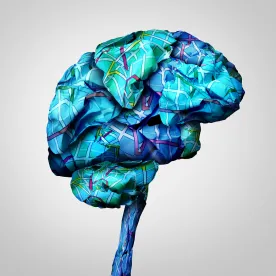Increasing evidence suggests that professional athletes in contact sports are suffering brain damage as a result of concussions. For many years, doctors believed that chronic traumatic encephalopathy (CTE) was limited to boxers. In that context, it was referred to as “punch-drunk syndrome.” However, pathologists are reporting similar brain damage among other athletes.
The biological processes leading to CTE may start many years before recognizable symptoms appear; however, there is no reliable test to detect CTE in its earliest stages. Often an athlete’s confusion or memory loss that is related to CTE is only confirmed following an autopsy.
A small study of National Football League players indicates that a low-cost, noninvasive test may identify the early signs of CTE. The test tracks changes in conversational language years before symptoms appear. The linguistic test would be valuable in assessing the effectiveness of treatments to prevent cognitive damage due to CTE.
In the study, published in the journal Brain and Language, researchers at Arizona State University tracked the spontaneously spoken words used by a group of players, coaches, and executives in 10,000 interviews and news conferences from 2007 to 2015. Each subject had spoken at least 30,000 words in the interviews. Researchers noted a decline in vocabulary size and other verbal skills in the 10 subject players. The players were compared to 18 coaches and executives who had never played professional football.
Researchers used two standard, simple measures of verbal ability. One was the ratio of the number of verbs, nouns, adjectives, and adverbs to the total number of words spoken. The second was a ratio of the number of distinct words a player or coach or executive used in a news conference or interview to the total number of words spoken.
As neurologically healthy individuals age, measures of the complexity of their use of words and vocabulary remain stable until about they reach their mid-70s. But the study found a distinct difference in language changes between the subject players, coaches, and executives. The researchers concluded that the players were significantly more likely to show signs of verbal deterioration than non-players.
The findings of the study underscored the need for larger, long-term studies of changes in spoken and written language that could predict severe brain damage later in life.
A reliable linguistic tool could be used to evaluate head injuries from sports and other conditions arising outside of sports, including individuals who are at genetic risk for Alzheimer’s disease. Many experts suspect that the failure of drugs to effectively treat or slow the progression of Alzheimer’s disease is due to patients being treated too late in the disease’s course. A diagnostic testing would help identify patients in the subtle early stages.
Dr. Visar Berisha, lead author of the new study, and his colleagues at Arizona State, have been working for several years to develop tests to identify individuals at risk of brain damage. Dr. Berisha’s team is planning a larger study of football, hockey, and soccer players. The athletes will download an app on their smartphones and provide speech samples in the preseason and periodically thereafter. The researchers will track any concussions the players’ experience. The resulting data will form a basis for evaluating speech and language changes over time after a concussion.



 />i
/>i

